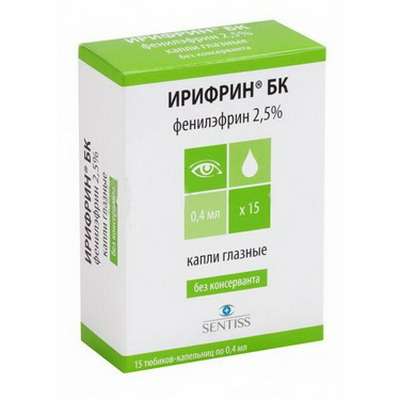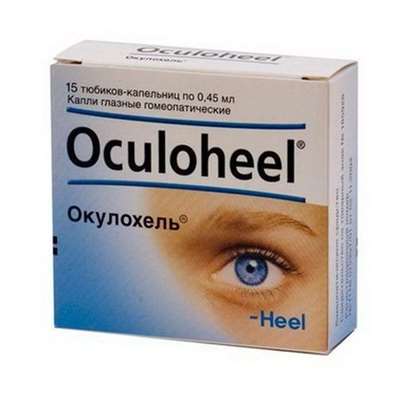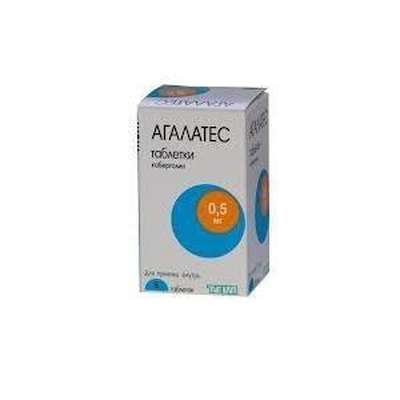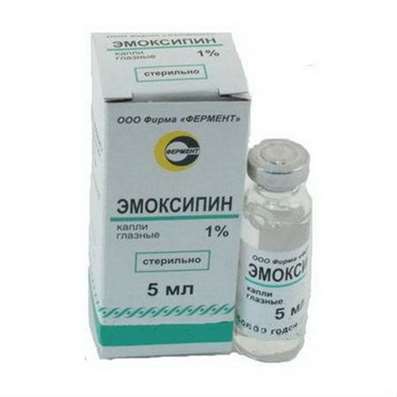Instruction for use: Tafluprost + Timolol (Tafluprostum + Timololum)
I want this, give me price
Instruction for Use: Tafluprost + Timolol (Tafluprostum + Timololum)
Pharmacotherapeutic group:
Ophthalmic agents in combination
Beta-blockers in combination
The nosological classification (ICD-10)
H40.0 Suspected glaucoma
Marked rise in intraocular pressure, Hypertension eyes, ocular hypertension, Measurement of intraocular pressure, ophthalmohypertension, Elevated IOP, Elevated intraocular pressure, Elevated intraocular pressure in infectious diseases of the eye, Povyshennore intraocular pressure, Increased ophthalmotonus, Spontaneous blockade angle opposite eye, Narrow chamber angle, Iatrogenic, blockade angle opposite eye
H40.1 Primary open-angle glaucoma
open-angle glaucoma, Open-angle glaucoma, Primary glaucoma, pseudoexfoliation glaucoma, Elevated IOP
Characteristics of substances Tafluprost + timolol
Combination of antiglaucoma drugs (synthetic fluorinated analogue PG F2α - tafluprost + beta-blocker - timolol maleate) as a clear, colorless solution.
Pharmacology
lowering intraocular pressure.
pharmacodynamics
This drug is a fixed combination of two active ingredients - tafluprost and timolol. Both active compounds reduce IOP, mutually reinforcing effects of each other, whereby the effect of reducing intraocular pressure when applied drug combination is more pronounced than individually.
Tafluprost - fluorinated analogue PG F2α. Tafluprost acid, being a biologically active metabolite of tafluprost has high activity and selectivity for the human FP-receptor (PG F2α receptors). Data pharmacodynamics study (preclinical studies) indicate that tafluprost reduces intraocular pressure, increasing the uveoscleral outflow of aqueous humor.
Timolol maleate is a nonselective β-blocker. The exact mechanism of lowering IOP in applying timolol maleate currently not fully established, but the methods and fluorescence tonography indicate that the primary effect may be due to the formation of reduction of intraocular fluid. At the same time, some studies have noted a slight increase in its outflow.
It is shown that in patients with open-angle glaucoma or ocular hypertension and a mean value of IOP before treatment 24-26 mm Hg. Art. IOP lowering effect during treatment with combinations of tafluprost + timolol was not lower than the effect observed with the concomitant use of tafluprost 0.0015% and timolol 0.5%, and the average daily reduction in IOP at 6 months was 8 mm Hg. Art. from baseline.
In addition, compared the activity of tafluprost + timolol combination and the corresponding drug monotherapy in patients with open-angle glaucoma or ocular hypertension and a mean value of IOP before treatment, is 26-27 mm Hg. Art. Reducing the daily average IOP during treatment with combinations of tafluprost + timolol was statistically more significant than that in the monotherapy tafluprost, is used 1 time per day, in the morning, or timolol applicable up 2 times a day. After 3 months of treatment the daily average IOP reduction compared with its initial level in the combination group tafluprost + timolol was 9 mm Hg. Art. as compared to 7 mm Hg. Art., observed in both groups alone. Lowering IOP have to apply a combination of tafluprost + timolol during the day ranged between 7 and 9 mm Hg. Art.
Pooled data from the two clinical trials in patients (n = 168) with initially high IOP of 26 mm Hg. Art. or higher have shown that use a combination of tafluprost + timolol in 3 or 6 months, the average daily reduction of IOP was 10 mm Hg. Art., with a range from 9 to 12 mm Hg. Art. during the day.
Pharmacokinetics
Absorption
In healthy volunteers, the blood plasma concentration of tafluprost acid and timolol were determined following single and repeated use in combination for 8 days + tafluprost timolol eye drops (1 per day) and 0.0015% tafluprost (1 per day) and 0 5% timolol (2 times a day). It was found that tafluprost acid Cmax in plasma attained at 10 minutes after application of the combination of timolol + tafluprost, followed by a decrease below the threshold sensitivity of the method (10 pg / ml) for "30 minutes. Accumulation of tafluprost acid was negligible, and on the 8th day of treatment, the mean values of parameters AUC0-last - monotherapy: (4,45 ± 2,57) pg · h / mL, the combination of tafluprost + timolol: (3,6 ± 3, 7) pg · h / mL and Cmax - monotherapy: (23,9 ± 11,8) pg / ml, the combination of timolol tafluprost +: (18,7 ± 11,9) pg / ml - were slightly lower than with the combination of tafluprost + timolol compared to monotherapy tafluprost. Cmax timolol in plasma after instillation combination tafluprost + timolol in the 1st and 8th day was achieved after 15 and 37.5 minutes, respectively. On the 8th day, the value of AUC0-last timolol - monotherapy: (5750 ± 2440) pg · h / mL; combination tafluprost + timolol (4560 ± 2980) pg · h / ml and a mean Cmax - monotherapy: (1100 ± 550) pg / ml, the combination of tafluprost + timolol (840 ± 520) pg / ml - were slightly lower with + timolol combination tafluprost than timolol alone. The lower the concentration of timolol in blood plasma when using a combination of timolol tafluprost + explained by its application in a single day, while monotherapy timolol applied 2 times a day.
Absorption of timolol tafluprost and through the cornea. it has been found that the penetration of tafluprost from combinations tafluprost + timolol through the cornea was comparable to its penetration when using tafluprost monotherapy 1 time per day, while the penetration of timolol in combination tafluprost + timolol was slightly lower on the basis of preclinical studies than timolol monotherapy. Meaning AUC4 hours after instillation of tafluprost acid combinations tafluprost + timolol was 7.5 and 7.7 ng · h / ml - after instillation of single agent tafluprost. AUC4 value h after applying the combination of timolol tafluprost + timolol alone and was 585 and 737 ng · h / ml, respectively. Tafluprost acid Tmax is 60 minutes - with the combination of both tafluprost + timolol, alone and in tafluprost and timolol Tmax is 60 min with the combination of timolol and tafluprost + 30 min - timolol in monotherapy.
Distribution
Tafluprost. According to preclinical studies, tissue distribution tafluprost eye tracer radioisotope, suggests that this drug has a low affinity for the pigment melanin.
Autoradiographic study found that the highest concentration of radioactivity was observed in the cornea, and then - in the eyelids, the sclera and the iris. The distribution of radioactively-labeled tafluprost was as follows in other organs: lacrimal apparatus, palate, esophagus, gastrointestinal tract, kidneys, liver, pancreas and bladder. Binding of tafluprost acid with human serum albumin in vitro was 99% at a concentration of 500 ng / ml of tafluprost acid.
Timolol. According to preclinical studies, Tmax radiolabeled timolol in the aqueous humor corresponds to 30 minutes after a single application of timolol containing radioactive isotope 3H (0.5% solution: 20 l / eye). Timolol is derived from the aqueous humor more rapidly than pigmented iris and ciliary body tissues.
Metabolism
Tafluprost. The main route of metabolism in humans tafluprost validated studies in vitro, it is a hydrolysis with a pharmacologically active metabolite - tafluprost acid, which is then metabolized by glucuronidation or β-oxidation. Β-oxidation products are pharmacologically inactive and dinor- 1,2-1,2,3,4-tetranor-tafluprost acid metabolites which may be hydroxylated or glyukuronirovany. Cytochrome P450 enzyme system is not involved in the metabolism of tafluprost acid. The refined enzymes study conducted on rabbit corneal tissue, it was revealed that the main esterases responsible for ester hydrolysis to the acid tafluprost tafluprost is carboxyl. Butyrylcholinesterase can also facilitate hydrolysis.
Timolol. Timolol is metabolised in the liver involving the cytochrome P450 isoenzyme CYP2D6 to form inactive metabolites, which are derived primarily by the kidneys.
breeding
Tafluprost. In a study with rats, it was found that about 87% after instillation 3H-shaped tafluprost 0.005% ophthalmic solution in both eyes once daily for 21 days of the total radioactive dose excreted through the excretory organs. Approximately 27-38% of the dose is excreted by the kidneys, and about 44-58% - in the gastrointestinal tract.
Timolol. Expected T1 / 2 from plasma is about 4 hours. After oral timolol gradually metabolized in the liver and metabolites excreted in the urine together with the unchanged 20% timolol. Data obtained by deriving of timolol it orally.
The use of substances Tafluprost + timolol
Reduction of IOP in adult patients with open-angle glaucoma or ocular hypertension with insufficient response to local monotherapy drugs from the group of β-blockers or PG analogues when shown combination therapy, and in patients who are expected to improve tolerability of treatment through the use of eye drops that do not contain preservatives.
Contraindications
Hypersensitivity to tafluprost and / or timolol; airways hyperreactivity syndrome including bronchial asthma, or a history of bronchial asthma, severe chronic obstructive pulmonary disease; sinus bradycardia, sinus node weakness syndrome, including heart sinoatrial block, AV-block II and III degree, without a pacemaker; decompensated heart failure, cardiogenic shock; age of 18 years (unknown clinical applications); pregnancy; breast-feeding.
Restrictions apply
The combination of tafluprost + timolol should be used with caution due to the limited experience of use in patients with hepatic and renal insufficiency, aphakia, psevdofakiey to break the back of the lens capsule, or the implantation of the lens in the anterior chamber of the eye, pseudoexfoliation, or pigmentary glaucoma, and in patients with established factors the risk of cystoid macular edema or iritis / uveitis. There is no experience with tafluprost with neovascular, closure, narrow-angle glaucoma and congenital. The combination of tafluprost + timolol and should be used with caution in patients with corneal disease (can cause dry eye syndrome), cardiovascular diseases (coronary heart disease, Prinzmetal angina, heart failure, AV block I degree), disorders of the peripheral circulation (in severe forms of Raynaud's disease or Raynaud's syndrome), chronic obliterating lung disease mild to moderate severity (the combination is possible only if the expected benefit outweighs the potential risk) labile course of diabetes or spontaneous hypoglycemia (because β-blockers may mask clinical signs and symptoms of acute hypoglycemia), concomitant β-blocker treatment (when administered in the form of eye formulations).
Pregnancy and breast-feeding
There are no data on the effect of the combination of tafluprost + timolol on fertility in humans.
There are no adequate data on the use of a combination of tafluprost + timolol in pregnant women. Women of childbearing age must use effective methods of contraception during treatment with the combination of tafluprost + timolol. Do not use a combination of tafluprost + timolol during pregnancy, except in special cases (if there are no other treatments).
Tafluprost. There are no adequate data on the use of tafluprost in pregnant women. Tafluprost may have adverse pharmacological effects on pregnancy and / or development of the fetus or newborn baby. In animal studies, there is evidence of reproductive toxicity tafluprost, at the same time, the potential risk of its application in humans is unknown.
Timolol. Adequate data on the use of timolol in pregnant women are missing. The combination of tafluprost + timolol should not be used in pregnant women unless the expected benefit to the mother outweighs the potential risk to the fetus (see. "Dosage and administration").
Epidemiological studies have found no systemic violations of fetal development, but noted the risk of intrauterine growth retardation in the case of receiving β-blockers inside. In addition, clinical signs and symptoms of β-adrenoceptor blockade (eg bradycardia, hypotension, respiratory disorders and hypoglycaemia) have been observed in newborns, if β-blockers have been used before childbirth. In the case of a combination of tafluprost + timolol until delivery should be carefully monitored for the condition of the newborn during the first days of life.
It is known that β-blockers penetrate into breast milk. However, it is unlikely that the application of timolol eye drops in recommended therapeutic doses, sufficient amounts of the substance can penetrate into breast milk to cause symptoms of β-adrenoceptor blockade in an infant.
There are no data on the excretion of tafluprost and its metabolites in human breast milk. Available toxicological data in animals suggest a possible excretion of tafluprost and its metabolites in breast milk. However, it is unlikely that the application of tafluprost eye drops in recommended therapeutic doses sufficient amount of the substance permeated in breast milk to cause clinical symptoms in the infant. Not recommended breastfeeding child if the mother is required combination therapy tafluprost + timolol.
Side effects of substances Tafluprost + timolol
In clinical studies> 484 patients were treated with a combination of tafluprost + timolol. The most commonly detectable side effect related to treatment, the appearance of which was reported in "7% of patients had conjunctival hyperemia / eye, in most cases mild. Adverse reactions observed in clinical studies of tafluprost + timolol combination, limited to the same reactions that were previously observed in the separate application of tafluprost and timolol. New adverse events unique to the combination of tafluprost + timolol, in clinical studies have been identified. The majority of adverse reactions observed with a part of the vision, were mild or moderate, severe reactions were not observed.
To evaluate the incidence of adverse reactions, according to the MedDRA terminology (Medical Dictionary regulatory activity), the following classification is used: very common - (≥1 / 10); often - (≥1 / 100, <1/10); infrequently - (≥1 / 1000, <1/100); rarely - (≥1 / 10,000, <1/1000); very rare - (<1/10000), and unknown (frequency can not be estimated from the available data).
The combination of tafluprost + timolol
From the nervous system: rarely - headache.
From a sight organ: often - conjunctival hyperemia / eye pruritus, eye pain, changes in eyelashes (increased length, thickness and number), change the color of eyelashes, eye irritation, foreign body sensation in the eye, blurred vision, photophobia; rarely - discomfort in the eye, dry eye irritation, a feeling of discomfort in the eyes, conjunctivitis, erythema of eyelid, the symptoms of allergic eye disease, eyelid edema, superficial punctate keratitis, tearing, signs of inflammatory reaction in the anterior chamber of moisture, asthenopia, blepharitis.
The following adverse reactions have been observed during treatment or tafluprost timolol and may potentially occur with the use of a combination of tafluprost + timolol.
Tafluprost
On the part of the organ of vision: blurred vision, increased pigmentation of the iris pigmentation of eyelids, conjunctival edema, the appearance of discharge from the eye, cell opalescence in the anterior chamber of the eye, allergic conjunctivitis, pigmentation of the conjunctiva, the change in the follicles of the conjunctiva, the deepening crease, iritis / uveitis.
Skin and subcutaneous tissue disorders: hypertrichosis century.
From the respiratory system: unknown - asthma, shortness of breath.
timolol
Immune system: allergic reactions, including angioedema, urticaria, local or generalized skin rash, anaphylaxis, pruritus.
On the part of metabolism and nutrition: hypoglycemia.
On the part of the psyche, depression, insomnia, nightmares, memory loss, nervousness.
From the nervous system: dizziness, syncope, paraesthesia, increased symptoms of myasthenia gravis, acute ischemic stroke, cerebral ischemia.
From a sight organ: keratitis, decreased corneal sensitivity, disturbance of the visual acuity, including refractive changes (in some cases as a result of the abolition of miotic therapy), ptosis, diplopia, choroidal detachment following operations fistuliziruyuschey (sm. "Precautions"), tearing, corneal erosion.
On the part of the organ of hearing and balance: tinnitus.
From the heart: bradycardia, chest pain, palpitations, edema, arrhythmia, congestive heart failure, cardiac arrest, heart block, AV block, cardiac failure.
On the part of the vessels: lowering blood pressure, intermittent claudication, Raynaud's phenomenon, cold hands and feet.
The respiratory system, organs, thoracic and mediastinal disorders: dyspnea, bronchospasm (predominantly in patients with a history of existing indication bronchospastic disease), respiratory failure, cough.
On the part of the digestive tract: nausea, dyspepsia, diarrhea, dryness of the oral mucosa, dysgeusia, abdominal pain, vomiting.
Skin and subcutaneous tissue disorders: alopecia, psoriasiform rash or exacerbation of psoriasis flow, skin rash.
On the part of the musculoskeletal and connective tissue disorders: systemic lupus erythematosus, myalgia, arthropathy.
Reproductive system and breast: Peyronie's disease, decreased libido, sexual dysfunction.
General disorders: asthenia / fatigue, thirst.
Very rarely during the use of eye drops containing phosphates, reported cases of calcification of the cornea in some patients with severe corneal damage.
Interaction
Clinical studies of the interaction of a combination of tafluprost + timolol with other drugs have not been conducted.
Perhaps the reduction in blood pressure and / or the appearance of symptomatic bradycardia in case of simultaneous application of ophthalmic drugs containing β-blockers, and regular use of BPC and other β-blockers, anti-arrhythmic drugs (including amiodarone), cardiac glycosides, parasympathomimetics, guanetidina.
With simultaneous use of isozyme CYP2D6 inhibitors (eg quinidine, fluoxetine, paroxetine) and timolol reported on strengthening the systemic effects of β-adrenergic blocker (decreased heart rate, depression). With simultaneous use of ophthalmic preparations containing β-blocker and adrenaline (epinephrine), in some cases, noted the expansion of the pupil.
Overdose
No cases of overdose combinations tafluprost + timolol were reported. When instillation combinations tafluprost + timolol eye the appearance of symptoms of overdose unlikely.
There have been reports of inadvertent overdosage of timolol, which has led to the development of systemic effects similar to those of systemically β-blockers, namely, dizziness, headache, shortness of breath, bradycardia, bronchospasm, and cardiac arrest (see. "Side effects").
Treatment: symptomatic and supportive therapy. Withdrawal of timolol in hemodialysis slowed.
Precautions substances Tafluprost + timolol
systemic effects
As with other ophthalmic medicines, tafluprost and timolol are subjected to systemic absorption. Due to the presence of a combination of tafluprost timolol + β-antiadrenergic component - timolol, can develop the same adverse reactions with the CCC and the respiratory system, as in the application of systemic β-blockers. The incidence of systemic adverse reactions after topical application of eye drops lower than after systemic administration (see., "Dosage and Administration".)
Violations of the heart
In patients with cardiovascular diseases (eg coronary heart disease, Prinzmetal angina, cardiac failure) and hypotension must carefully assess the need for .beta.-blocker therapy and consider the possibility of using drugs other groups. It is necessary to carry out surveillance of patients with cardiovascular disease with the purpose of early detection of the symptoms of worsening disease and adverse reactions. Due to the negative impact on the speed of the pulse β-blockers should be used with caution in patients with AV block of I degree.
Violations by vessels
Caution should use a combination of tafluprost + timolol in patients with severe peripheral circulatory disorders (eg severe forms of Raynaud's disease or Raynaud's syndrome).
Violations of the respiratory organs
After applying some ophthalmic β-blockers may increase the risk of adverse reactions on the part of the respiratory system, including deaths due to bronchospasm in patients with asthma. In patients with mild / moderate COPD combination tafluprost + timolol should be used with caution, and only if the expected benefit of its use outweighs the potential risk.
Hypoglycaemia / diabetes
β-blockers must be used with caution in patients subject to spontaneous hypoglycemia, or in patients with labile course of diabetes, because β-blockers may mask the signs and symptoms of acute hypoglycemia.
β-blockers may also mask the signs of hyperthyroidism. Abrupt withdrawal of therapy β-blockers may lead to deterioration of symptoms.
Diseases of the cornea
Ophthalmic β-blockers may promote the development of dry eye syndrome. Caution should be exercised when using this combination in patients with corneal diseases.
Other β-blockers
The effect on intraocular pressure or the known effects of systemic β-adrenergic blockade may be intensified in the application of timolol (one of tafluprost + timolol combination of active ingredients) in patients already receiving a systemic β-blocker. the condition of such patients should be carefully monitored. It is not recommended to use two local β-blocker simultaneously.
Angle-closure glaucoma
In patients with angle-closure glaucoma primary goal of therapy is to open the angle of the anterior chamber of the eye. This requires a narrowing of the pupil mitotic drug. Timolol has little effect on the pupil or do not provide. When timolol is used to reduce elevated IOP in angle-closure glaucoma, it should be used in combination with mitotic agent, and not as a monotherapy.
Anaphylactic reactions
In the application of β-blockers, patients with atopic history or severe anaphylactic reaction to a number of allergens in history are more responsive to the reintroduction of such allergens and unresponsive to the usual doses of epinephrine used to treat anaphylactic reactions.
Detachment of the choroid
Reported cases of choroidal detachment when using drugs that suppress the production of aqueous humor (eg timolol, acetazolamide) after fistuliziruyuschih operations.
general anesthesia
Ophthalmic β-blockers may block the effects of systemic β-adrenergic agonists, such as adrenaline. The anesthesiologist should be informed about the use of the patient timolol.
Special patient groups
Children. The use of a combination of tafluprost + timolol in children under the age of 18 years is not recommended.
Elderly patients. Elderly patients do not require dose adjustment combinations tafluprost + timolol.
Patients with renal / hepatic insufficiency. The use of a combination of tafluprost + Timolol has not been studied in patients with renal and hepatic impairment, therefore use this combination in these patients with caution.
Prior to treatment patients should be informed about the possible excessive growth of the eyelashes, darkening of the eyelid skin and increased pigmentation of the iris, which are associated with tafluprost therapy. Some of these changes may be permanent, and it may lead to differences in the external eye as if only one eye is subjected to treatment.
Changing iris pigmentation occurs slowly over several months can remain inconspicuous. Changing eye color is observed mainly in patients with irises mixed colors, for example if the eyes brownish-gray, gray-brown, yellow-brown or green-brown. Treatment of only one eye can lead to permanent heterochromia.
Effects on ability to drive vehicles and mechanisms. Effect of combination of tafluprost + timolol on ability to drive and operate machinery has not been studied. As with any other ophthalmic agents, after the application of this combination may be transient blurred vision, so you should refrain from driving and performing activities that require high concentration and psychomotor speed reactions to restore vision.

 Cart
Cart





